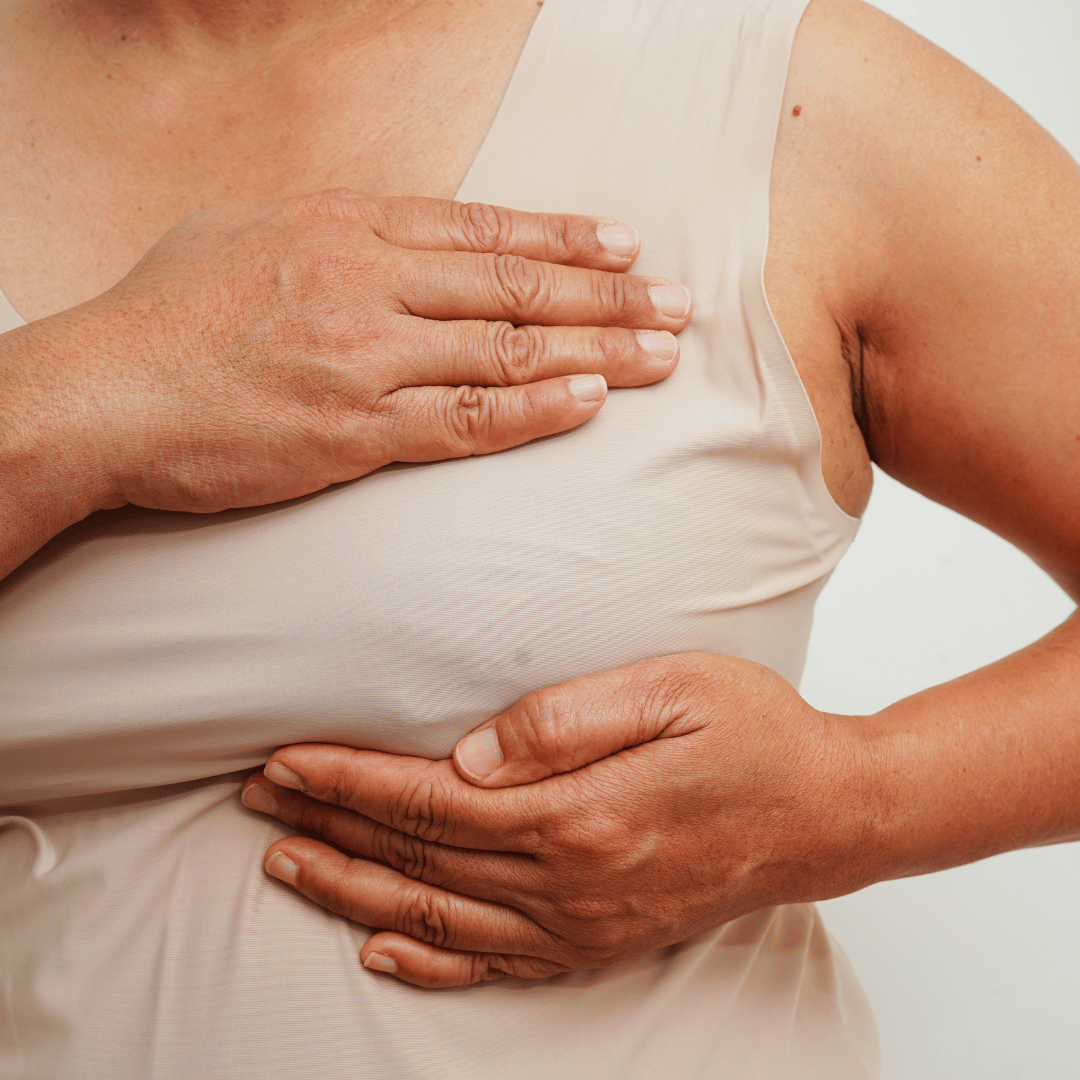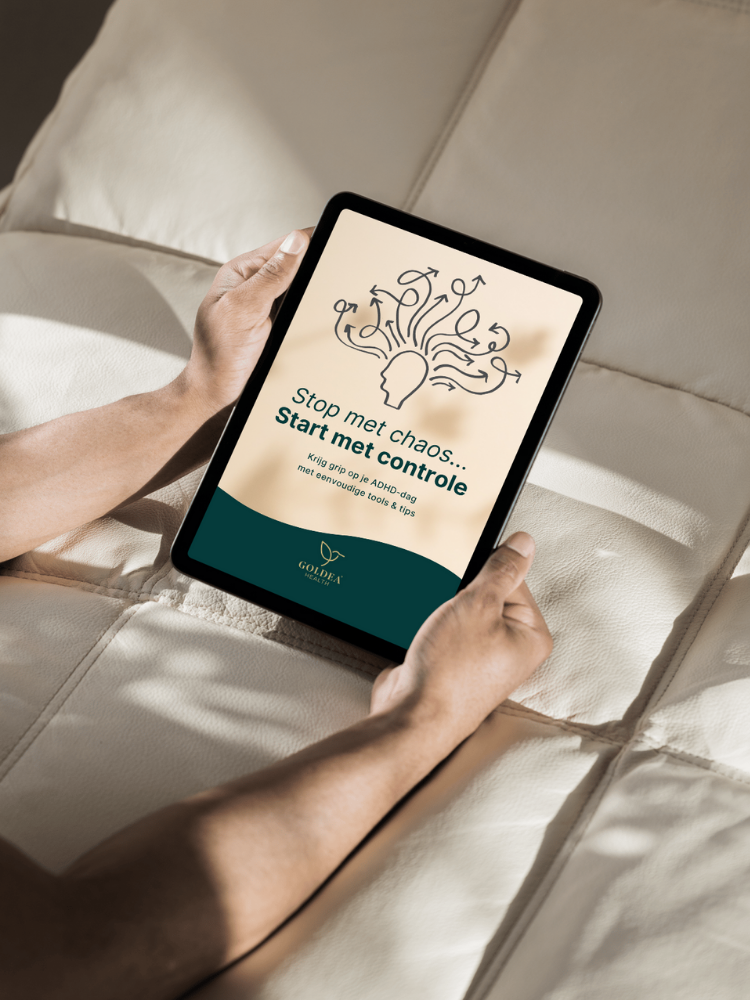Reading time: 5 minutes
At Goldea Health, we are passionate about all things health promotion. Now, we would like to discuss the importance of screening for women, with a special focus on mammography and alternative methods such as thermography. We also share valuable supplements and health tips that can help to better protect and support your body.
Disclaimer:
Always listen to your body and feelings. Our advice is meant to inform and inspire, but never replace professional medical advice. Always consult a doctor or specialist in case of health complaints. We share our view and insights on this subject purely.
Breast cancer screening: What, why and how?
One in seven women in the Netherlands will be confronted with breast cancer.
That is why all women aged 50 to 75 receive an invitation for the population screening for breast cancer. Based on the vision: the earlier we detect breast cancer, the greater the chance of a less invasive treatment.
But what exactly does this research entail?
During a population screening for breast cancer, a mammogram is performed.
This is an x-ray of the breasts that helps detect abnormalities. A method that has been used for years, but is this the most effective method? Are there alternatives that are worth considering?
What is the alternative?: Mammography VS Thermography
Mammography is a widely used method for detecting breast cancer, but it is not without its drawbacks. It can be uncomfortable because the breasts are compressed and radiation is used. That is why we did some research. This is where thermography comes in as an alternative.
What is thermography?
Thermography uses infrared cameras to measure the temperature of the skin. This can help detect abnormal tissue growth, as cancer cells often have a higher temperature than healthy tissue. The great advantage of thermography is that it does not use radiation and does not require compression of the breasts.
At Goldea Health, we believe in exploring all possible options for our health. That is why we also talk about thermography as an alternative to mammography. For more information, you can visit De Groene Zuster , a highly regarded institution that specializes in thermography.
Supplements for optimal health
In addition to screening methods, certain supplements can play a valuable role in supporting our health and preventing disease.
Here are some recommendations:
Omega-3 fatty acids are known for their anti-inflammatory properties.
Chronic inflammation can contribute to the development of cancer, so reducing inflammation may help reduce this risk.
Astaxanthin is 6,000 times more potent than vitamin C. It provides excellent protection against oxidative stress, which is important for overall health and can help prevent disease.
Curcumin, the active ingredient in turmeric, is also a powerful antioxidant and has anti-inflammatory properties. It supports the liver in detoxification and can help remove harmful substances from the body.
Research shows that a high level of vitamin D, more than 160 nmol/L, can be beneficial against breast cancer. Vitamin D plays a crucial role in the immune system.
Symptoms and examinations
Although we do not recommend specific supplements for uterine cancer, it is important to be aware of symptoms such as unexpected bleeding outside the regular cycle and pain in the lower abdomen. These can indicate conditions such as fibroids or HPV. With these symptoms, it is crucial to have a pap smear and an ultrasound done immediately for further diagnosis.
Self-examination
It is also important to examine your breasts yourself regularly. Self-examination can help detect changes or lumps early. Here are some steps for effective self-examination:
- Look and compare: Stand in front of a mirror with your arms at your sides and look at your breasts. Notice any changes in size, shape, color, or texture.
- Hands up: Raise your arms above your head and look at your breasts again.
- Feeling in the shower: Use the pads of your fingers to feel your breasts while standing up. Use small, circular motions and cover the entire breast area.
- Lying down: Lie down and feel your breasts again, using the same technique as when standing.
Tip: do this weekly in the shower.
For detailed instructions, please see the self-examination guide on the Borstkanker.nl website.
Conclusion
We want to empower women to be proactive about their health.
Population screenings such as mammography and thermography play an important role in the early detection of breast cancer. In addition, supplements such as omega-3 , astaxanthin , curcumin and vitamin D can help support your overall health and reduce your risk.
Remember that you are in control of your own health.
- Be alert to changes.
- Perform self-examination regularly.
- Do not hesitate to seek medical attention when necessary.
Do you have any questions?
For further guidance and advice, we recommend contacting our orthomolecular therapist to help you get the most out of your health and receive free, tailored advice . Visit our Instagram page for additional inspiration. Discover healthy recipes, blogs and a wealth of ideas to take your wellbeing to the next level. We’re happy to share knowledge and tips with you!
Or subscribe to our newsletter for the latest tips and insights!
Sources
About vitamin D and breast cancer
-
Garland CF, Gorham ED, Mohr SB, et al. Vitamin D and prevention of breast cancer: pooled analysis. J Steroid Biochem Mol Biol. 2007;103(3-5):708-711. doi:10.1016/j.jsbmb.2006.12.007
-
Chen P, Li M, Gu PLoS One. 2013;8(1). doi:10.1371/journal.pone.0049312
-
Smith-Warner SA, Spiegelman D, Yaun SS, et al. Intake of fruits and vegetables and risk of breast cancer: a pooled analysis of cohort studies. JAMA. 2001;285(6):769-776. doi:10.1001/jama.285.6.769



